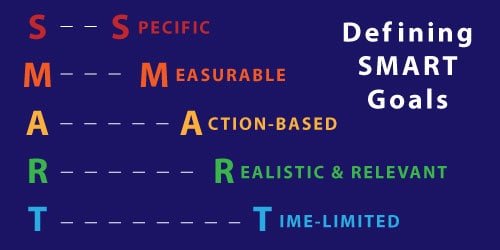
Part 1 of 3: Defining SMART Goals for IEPs
It is estimated that about 5.8 million American school children, ages 6 to 21 receive special education through the federal Individuals with Disabilities Education Act (www.edweek.org). With this many children receiving special education based on Individualized Education Programs (IEPs), it is imperative for parents and service providers to understand the importance of a well written IEP.
A well-written IEP is used as a road map to drive a child’s specialized instruction for an entire year, so it’s important that your child has a clear, cohesive framework to ensure that s/he reaches the destination by, if not before, the end of the IEP period. In the words of psychologist, writer, and educator, Robert Mager, “If you’re not sure where you’re going, you’re liable to end up someplace else. If you don’t know where you’re going, the best made maps won’t help you get there.” (1)
SMART is an acronym for Specific, Measurable, Action-Based, Realistic and Relevant, and Time-Limited. A specific goal targets areas of academic achievement and functional performance. A measurable goal is observable. Action-based refers to goals that are stated in measurable terms with respect to direction of behavior, area and level of need, and level of attainment. Realistic and relevant goals address a child’s unique needs resulting from a disability (Wright & Wright, 2010). SMART goals provide a logical plan for success.
I commonly hear parents say, “It doesn’t make sense… my child is receiving hours of service and yet s/he isn’t reading.” My response to this dilemma usually opens a conversation around the ‘right kind’ of service. In order for a special education intervention to be effective, it must be “the right kind and quality of instruction, delivered with the right level of intensity and duration to the right children at the right time.” (2)
This seems like an obvious assertion; however, data from the National Center for Education Statistics (NCES) is a stark reminder that students across the United States are struggling with mathematics and reading. National average scores from the 2013 National Assessment of Educational Progress (NAEP) (nces.ed.gov/nationsreportcard) reveal that 74% of the nation’s 12th-graders performed below the proficient level in mathematics and 62% performed below proficiency in reading.
With the increase in awareness and special education services, why are such high percentages of students scoring below proficient? This question inevitably loops back to the effectiveness of instruction, which begins with sound goals. I will take this idea a step further and add that in order for goals to be effective they need to be designed to treat the underlying deficit skills that are causing the manifestation of the disability; otherwise the disability is being managed, not treated.
The next edition will provide examples of ineffective IEP goals and examine the essential foundation for the development of a SMART IEP: a well written Student Strengths and Key Evaluation Results Summary.
(1) Wright, Peter W.D. & Pamela Darr (2010). From Emotions to Advocacy Second Edition. Wrighslaw: Special Education Law, 2nd Edition by Peter W.D. Wright and Pamela Darr Wright Library of Congress Cataloging-in-Publication Data
(2) Torgesen, J. K. (1998). Catch Them Before They Fall. American Educator /American Federation of Teachers, Spring Summer, 2-4.










Jaydin Skinner says: